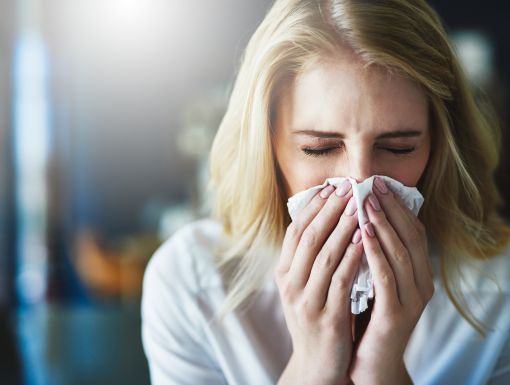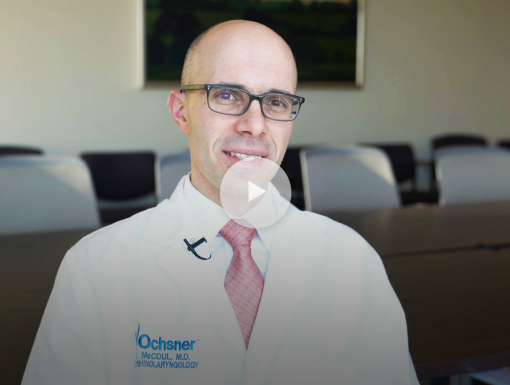
Symptoms of a Sinus Infection
Ever have a stuffy or runny nose that just won’t go away, or postnasal drip combined with a feeling of pain or pressure in your face? Those symptoms might indicate that you have a sinus infection.
What are the sinuses?
First off, let’s talk about where your sinuses are located and what they are. Your sinuses are air-filled cavities. Did you know that you have four pairs of them, located on the right and left side?
- “Frontal sinuses” are located right behind your forehead.
- “Maxillary sinuses” are behind your cheeks.
- “Sphenoid” and “ethmoid sinuses” are located deeper in your skull behind your eyes.
Sinuses are hollow, but they are lined with cells that secrete mucous. The mucous helps our nasal passageways to work properly. But problems can happen when the small air passageways into the sinuses, called ostia, get blocked. When the ostia are blocked, air can’t get in, and mucous can’t get out. Germs can then build up in that blocked fluid. That’s called sinusitis.
Causes of sinusitis
Sinusitis, or sinus infections, can be acute (occurring suddenly for a few days) or chronic (continuing for at least a few weeks). Sinus infections are common.
Causes include:
- Viruses
- Bacteria
- Fungi and mold
- Allergies
- Autoimmune reactions (when your immune system mistakenly attacks your body)
What are the symptoms of a sinus infection?
- Runny nose
- Stuffy nose
- Pain or pressure located behind your cheeks or eyes
- Headache
- Postnasal drip (feeling mucous dripping down your throat)
- Sore throat
- Cough
- Bad breath
What is the treatment for sinus infections?
If you have several facial pain, pressure or headache; symptoms that get worse after initially improving; symptoms lasting longer than 10 days with no improvement; or fever for three or four days, see your doctor. If you have other symptoms that are concerning you, do not hesitate to see a doctor.
You might think that antibiotics are used to treat every sinus infection, but this is not necessarily true. In fact, many sinus infections can clear up without antibiotics. It’s important to discuss this with your doctor. In fact, using antibiotics when they are not necessary can have negative consequences, such as skin rashes and antibiotic-resistant infections. Often, sinus infections go away on their own.
Therefore, you doctor might decide to use a “watchful waiting’’ strategy, which may involve monitoring your symptoms for two or three days to see if your symptoms can improve with bed rest, increased fluids and over-the-counter pain relievers. If your symptoms haven’t improved after a period of time, your doctor might then prescribe antibiotics.
Other home remedies that can help:
- Warm compresses placed on the face to help relieve sinus pressure
- Over-the-counter nasal decongestants or saline nasal spray
- Taking a hot, steamy shower, or breathing in steam from a bowl of hot water (be careful not to burn yourself!)
How can you prevent getting sinus infections?
Sinus infections are no fun. Taking these steps can cut down your risk.
- Don’t smoke and avoid secondhand smoke whenever possible. If you need help to stop smoking, Ochsner’s Smoking Cessation program is free to anyone age 18 and older who lives in Louisiana and Mississippi.
- Wash your hands thoroughly and often following these steps.
- Avoid close contact with people who have colds and other respiratory symptoms.
- Get your recommended vaccines, including the flu vaccine, and the pneumococcal vaccine, if your doctor recommends that for you. Also, when the COVID-19 vaccine becomes available to you, discuss getting this vaccine as well with your doctor or healthcare provider.
Learn more about Marlon Joseph, MD


